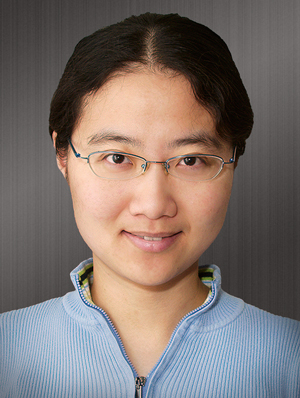Li Qian Turns Scar Tissue into Beating Heart Cells
Li Qian has converting heart scar tissue into beating muscle cells in live mice, paving the way for breakthroughs in stem-cell therapies.
Li Qian has succeeded in converting heart scar tissue into beating muscle cells in live mice, paving the way for therapies that can revitalize the damaged hearts of cardiac patients.
Qian’s study used mice who had suffered induced heart attacks. She and fellow researchers delivered to the damaged regions of their heart three genes (known collectively as GMT) that guide embryonic heart development. Within a month non-beating cells that normally form scar tissue transformed into beating heart-muscle cells. The hearts continued to strengthen and pump more blood through the three months of the study.
Qian’s team used the groundbreaking cell-reprogramming work of Shinya Yamanaka, another Gladstone scientist and UCSF professor of anatomy. In 2007 Yamanaka developed a strategy to turn adult human skin cells into cells that act like embryonic stem cells, revolutionizing cell biology and stem cell research.
Qian’s experiments carry Yamanaka’s results further by directly reprogramming the scar cells without first having to revert them back into stem cells before transforming them into beating heart muscle cells. This type of “direct reprogramming” revolutionizes regenerative medicine by enabling therapies that can help people living with debilitating conditions like scarred hearts, spinal cord injuries and even conditions like Alzheimer’s and Parkinson’s disease.
“These findings could have a significant impact on heart-failure patients — whose damaged hearts make it difficult for them to engage in normal activities like walking up a flight of stairs,” said Qian, a postdoctoral researcher at Gladstone, an independent research institute affiliated with UCSF medical school. “This research may result in a much-needed alternative to heart transplants — for which donors are extremely limited. And because we are reprogramming cells directly in the heart, we eliminate the need to surgically implant cells that were created in a petri dish.”
“Our next goal is to replicate these experiments and test their safety in larger mammals, such as pigs, before considering clinical trials in humans,” said Deepak Srivastava, director of Gladstone’s cardiovascular and stem-cell research and a UCSF professor. “We hope that our research will lay the foundation for initiating cardiac repair soon after a heart attack — perhaps even when the patient arrives in the emergency room.”
Qian, Srivastava and others working with them had transformed cardiac scar-tissue cells into cells that behave like cardiac muscle cells in petri dishes last November. This is the first time that the transformation has been performed in living animals. Their experiment was detailed in the April 18 issue of Nature.
Qian’s breakthrough has the potential to help the nearly one million Americans who survive heart attacks each year but are left with hearts weakened by scar tissue that hinders the ability to pump blood.
“The damage from a heart attack is typically permanent because heart-muscle cells — deprived of oxygen during the attack — die and scar tissue forms,” said Srivastava. “But our experiments in mice are a proof of concept that we can reprogram non-beating cells directly into fully functional, beating heart cells — offering an innovative and less invasive way to restore heart function after a heart attack.”
Li Qian, PhD, is a postdoctoral fellow at Gladstone and a California Institute of Regenerative Medicine (CIRM) scholar in the laboratory of Deepak Srivastava. Last November she became the first Gladstone researcher to win the Louis N. and Arnold M. Katz Basic Science Research Prize for Young Investigators from the American Heart Association (AHA).
Qian became interested in cardiovascular disease while an undergraduate at Fudan University in Shanghai. She earned her masters degree at the University of Michigan where she studied heart development in fruit flies. She completed her PhD work at the Sanford-Burnham Medical Research Institute in La Jolla, California before joining Gladstone in 2007.

Li Qian may have revolutionized the field of stem-cell therapy with her breakthrough in direct reprogramming.

